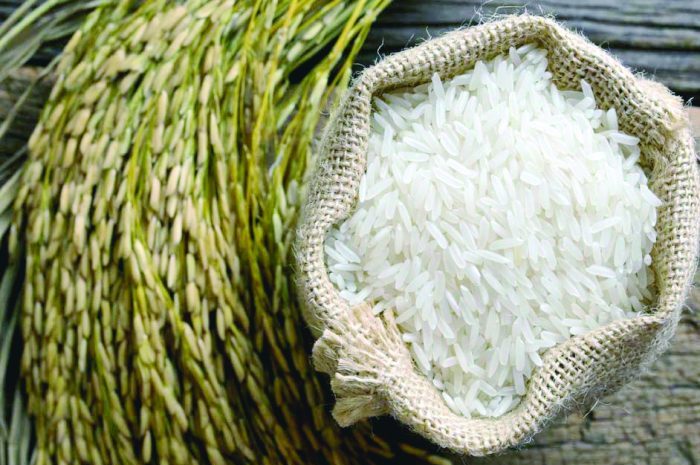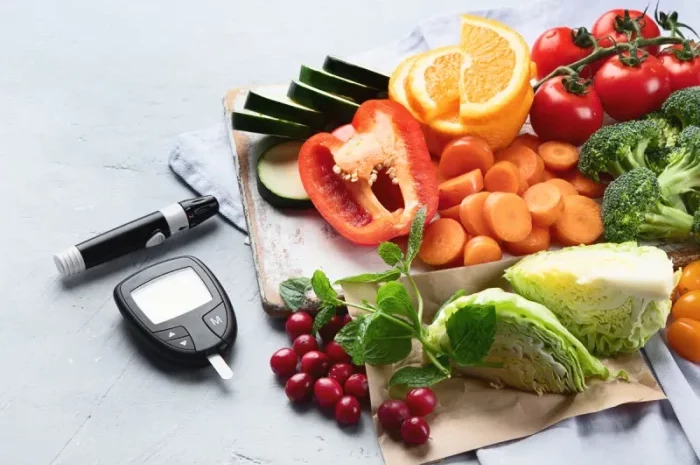Pre-diabetes is a serious health condition where blood sugar levels are higher than normal, but not high enough yet to be diagnosed as type 2 diabetes. Without intervention, it is likely to become type 2 diabetes in the next 10 years or less. However, pre-diabetes doesn’t have to lead to diabetes. Making lifestyle changes, particularly in diet, can significantly reduce the risk of progression. This essay will explore the dietary strategies and foods that can help manage pre-diabetes and promote overall health.
Understanding Pre-Diabetes and Its Risks
Pre-diabetes is characterized by impaired fasting glucose (IFG) or impaired glucose tolerance (IGT). This condition is a result of insulin resistance, where the body’s cells do not respond effectively to insulin. Insulin is a hormone that helps glucose from food enter the cells to be used for energy. When cells resist insulin, glucose builds up in the blood, leading to elevated blood sugar levels.
Several factors contribute to the development of pre-diabetes, including genetics, overweight or obesity, a sedentary lifestyle, and poor dietary habits. Individuals with pre-diabetes are at higher risk of developing type 2 diabetes, cardiovascular disease, and other metabolic disorders. However, dietary modifications can play a pivotal role in managing and even reversing pre-diabetes.
The Role of Diet in Managing Pre-Diabetes
A well-planned diet can help control blood sugar levels, reduce insulin resistance, and promote weight loss, all of which are crucial for managing pre-diabetes. Here are key dietary principles to consider:
Emphasize Low Glycemic Index (GI) Foods
The glycemic index measures how quickly a food raises blood sugar levels. Foods with a high GI cause rapid spikes in blood sugar, while low-GI foods result in a slower, more gradual increase. Choosing low-GI foods can help maintain stable blood sugar levels. Examples of low-GI foods include:
- Whole grains (e.g., barley, quinoa, whole oats)
- Legumes (e.g., lentils, chickpeas, black beans)
- Non-starchy vegetables (e.g., leafy greens, broccoli, cauliflower)
- Most fruits (e.g., apples, berries, pears)
Increase Fiber Intake
Dietary fiber, especially soluble fiber, can slow the absorption of sugar and help improve blood sugar levels. Fiber also promotes satiety, which can aid in weight management. Foods rich in fiber include:
- Whole fruits and vegetables
- Whole grains (e.g., brown rice, whole wheat bread, oatmeal)
- Legumes and beans
- Nuts and seeds
Choose Healthy Fats
Not all fats are created equal. Healthy fats, such as monounsaturated and polyunsaturated fats, can improve insulin sensitivity and reduce inflammation. Sources of healthy fats include:
- Avocados
- Nuts and seeds (e.g., almonds, flaxseeds, chia seeds)
- Olive oil and other plant-based oils
- Fatty fish (e.g., salmon, mackerel, sardines)
Opt for Lean Protein
Protein can help regulate blood sugar levels by slowing the digestion of carbohydrates. Including a source of lean protein in each meal can help manage hunger and improve blood sugar control. Good sources of lean protein include:
- Skinless poultry
- Fish and seafood
- Legumes and beans
- Low-fat dairy products (e.g., Greek yogurt, cottage cheese)
- Plant-based proteins (e.g., tofu, tempeh)
Limit Refined Carbohydrates and Sugars
Refined carbohydrates and added sugars can cause rapid spikes in blood sugar levels and contribute to insulin resistance. It’s essential to limit foods such as:
- White bread, white rice, and other refined grains
- Sugary beverages (e.g., soda, fruit juices)
- Sweets and desserts (e.g., cookies, cakes, candies)
- Processed snacks (e.g., chips, crackers)
Sample Meal Plan for Pre-Diabetes
To provide practical guidance, here’s a sample meal plan incorporating the dietary principles outlined above:
Breakfast
- Option 1: Oatmeal topped with berries, a tablespoon of chia seeds, and a handful of almonds.
- Option 2: A smoothie made with spinach, kale, half a banana, Greek yogurt, and a tablespoon of flaxseed.
- Option 3: Whole-grain toast with avocado, a poached egg, and a side of sliced tomatoes.
Mid-Morning Snack
- Option 1: An apple with a tablespoon of almond butter.
- Option 2: A small handful of mixed nuts and a piece of fruit.
- Option 3: Carrot sticks with hummus.
Lunch
- Option 1: A salad with mixed greens, grilled chicken, cherry tomatoes, cucumbers, avocado, and a vinaigrette dressing.
- Option 2: Quinoa bowl with black beans, corn, diced bell peppers, avocado, and a lime-cilantro dressing.
- Option 3: Lentil soup with a side of whole-grain bread.
Afternoon Snack
- Option 1: Greek yogurt with a sprinkle of flaxseed and a few berries.
- Option 2: A slice of whole-grain bread with hummus and sliced cucumbers.
- Option 3: A small portion of cottage cheese with pineapple chunks.
Dinner
- Option 1: Grilled salmon with steamed broccoli and a side of quinoa.
- Option 2: Stir-fried tofu with mixed vegetables (e.g., bell peppers, broccoli, carrots) over brown rice.
- Option 3: Baked chicken breast with roasted Brussels sprouts and a sweet potato.
Evening Snack
- Option 1: A small bowl of mixed berries.
- Option 2: A piece of dark chocolate (70% cocoa or higher) with a few almonds.
- Option 3: Celery sticks with a small amount of peanut butter.
Specific Foods to Include
In addition to the general dietary principles and meal plans, certain foods have been shown to have beneficial effects on blood sugar levels and insulin sensitivity. Including these foods in your diet can further support the management of pre-diabetes:
Berries
Berries are rich in antioxidants, vitamins, and fiber. They have a low glycemic index and have been shown to improve insulin sensitivity. Blueberries, strawberries, raspberries, and blackberries are excellent choices.
Leafy Greens
Leafy greens like spinach, kale, and Swiss chard are low in calories and carbohydrates but high in fiber and nutrients. They are also high in magnesium, which is known to improve insulin sensitivity.
Nuts and Seeds
Nuts and seeds, such as almonds, walnuts, chia seeds, and flaxseeds, are rich in healthy fats, protein, and fiber. They have been shown to reduce blood sugar levels and improve heart health.
Whole Grains
Whole grains like quinoa, barley, and farro are high in fiber and have a low glycemic index. They can help stabilize blood sugar levels and promote satiety.
Legumes
Legumes, including lentils, chickpeas, and black beans, are high in fiber and protein. They have a low glycemic index and can help improve blood sugar control.
Fatty Fish
Fatty fish such as salmon, mackerel, and sardines are rich in omega-3 fatty acids, which have anti-inflammatory properties and can improve insulin sensitivity.
Greek Yogurt
Greek yogurt is high in protein and probiotics, which can help improve gut health and insulin sensitivity. Choose plain, unsweetened varieties to avoid added sugars.
Cinnamon
Cinnamon has been shown to improve insulin sensitivity and lower blood sugar levels. Adding a sprinkle of cinnamon to your meals or beverages can be beneficial.
Apple Cider Vinegar
Apple cider vinegar has been shown to lower blood sugar levels after meals. Adding a small amount to your diet, such as in salad dressings, can be helpful.
Foods to Avoid
While focusing on healthy foods is important, it is equally crucial to avoid or limit certain foods that can negatively impact blood sugar levels and increase the risk of progressing to diabetes:
Sugary Beverages
Sugary beverages, including soda, fruit juices, and energy drinks, can cause rapid spikes in blood sugar levels and contribute to insulin resistance. It’s best to avoid these entirely and opt for water, herbal teas, or unsweetened beverages.
Refined Grains
Refined grains, such as white bread, white rice, and pasta, lack fiber and nutrients and can lead to rapid increases in blood sugar levels. Choose whole grains instead.
Processed Snacks
Processed snacks, such as chips, crackers, and sugary granola bars, often contain refined carbohydrates and added sugars. These can negatively impact blood sugar control and should be limited.
Sweets and Desserts
Sweets and desserts, including cookies, cakes, and candies, are high in added sugars and refined carbohydrates. They can cause significant spikes in blood sugar levels and should be consumed sparingly.
Trans Fats
Trans fats, found in many processed and fried foods, can increase insulin resistance and inflammation. It’s important to read labels and avoid foods containing partially hydrogenated oils.
Practical Tips for Managing Pre-Diabetes Through Diet
Successfully managing pre-diabetes through diet involves more than just knowing which foods to eat and avoid. Here are some practical tips to help you make lasting changes:
Plan Your Meals
Planning your meals ahead of time can help ensure you have healthy options available and reduce the temptation to choose less healthy options. Create a weekly meal plan and grocery list to stay organized.
Control Portion Sizes
Even healthy foods can contribute to weight gain and elevated blood sugar levels if consumed in large quantities. Pay attention to portion sizes and consider using smaller plates to help control portions.
Eat Regularly
Eating regular meals and snacks throughout the day can help keep blood sugar levels stable. Aim for three balanced meals and two to three healthy snacks each day.
Stay Hydrated
Drinking enough water is essential for overall health and can help manage blood sugar levels. Aim for at least eight 8-ounce glasses of water per day, and more if you are physically active.
Practice Mindful Eating
Mindful eating involves paying attention to what and how you eat, savoring each bite, and recognizing hunger and fullness cues. This practice can help prevent overeating and promote healthier food choices.
Read Food Labels
Reading food labels can help you make informed choices about the foods you eat. Look for whole, minimally processed foods with low amounts of added sugars and unhealthy fats.
Seek Support
Making dietary changes can be challenging, and seeking support can be beneficial. Consider working with a registered dietitian or joining a support group for individuals with pre-diabetes.
Conclusion
Pre-diabetes is a critical condition that serves as a warning sign for the potential development of type 2 diabetes. However, with the right dietary changes and lifestyle modifications, it is possible to manage and even reverse pre-diabetes. Emphasizing low-glycemic index foods, increasing fiber intake, choosing healthy fats and lean proteins, and avoiding refined carbohydrates and added sugars are all key strategies in managing blood sugar levels and improving insulin sensitivity.
A well-balanced diet rich in whole grains, fruits, vegetables, legumes, nuts, seeds, and lean proteins can support overall health and reduce the risk of progressing to diabetes. By making these dietary changes and adopting a healthy lifestyle, individuals with pre-diabetes can take control of their health and work towards a future free from diabetes and its complications.
Related topics:
What are the foods to prevent diabetes?

























